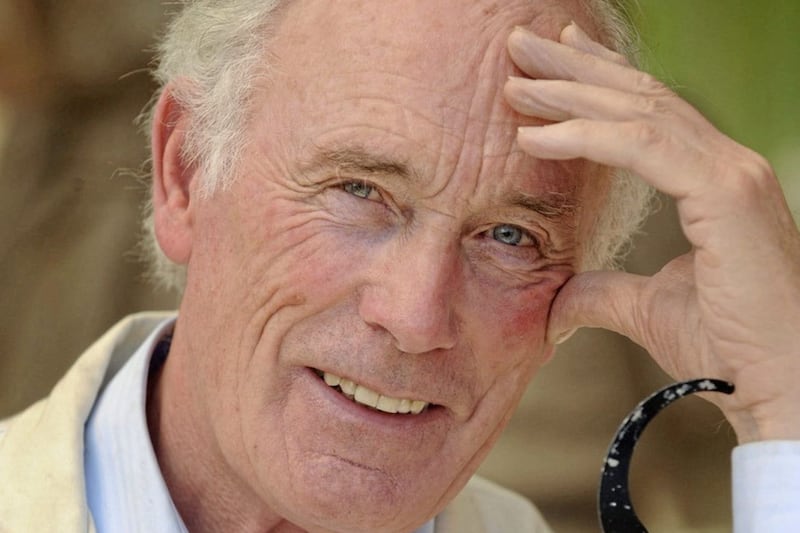JOHN Sherlock is an example of a man who made the best of his talent throughout his life. He passed away in June last year and tributes told of a charming man, fizzing with charm and creative energy, a teacher, hotelier and property developer as well as a qualified pilot, master mariner and accomplished musician, he played violin and piano, also trombone and guitar.
He was a Derry man, school was St Columb's College at the same time as John Hume and Seamus Heaney.
After studying art in Belfast and Liverpool in the early 1950s he taught alongside Heaney at St Thomas's Secondary Intermediate school and St Joseph's Teacher Training College in west Belfast.
Little did he know how fate and fortune would lead these two men to sit in his studio many years later as he fashioned their likenesses in bronze.
A book of his work compiled for his wife Rosemary and son Jonathan by his friend Mike McCann, emphasises how John's passion for sculpture developed late in life.
Although he touched on the medium at art school - indeed, as a young student he was invited to make the stags' heads for the gates of Glenveagh Castle in Donegal - the commercial world seemed more important at the time.
However, those days of study and creating were not lost when, in his 70s, he returned to the studio and began two years of fantastic work. Why did he not gain the recognition he deserved? Mainly because he worked to commission rather than displaying in galleries or at exhibitions.
::Working In Bronze
His first public work, which sits outside Lisburn & Castlereagh City Council's offices in Lisburn, is of the renowned cardiologist Professor Frank Pantridge, the man who pioneered the portable defibrillator and mobile coronary care.
Perched on a Mourne granite rock he is so lifelike that people often stop in their tracks for a double take.
John's subjects are many and varied - busts of Hume, Trimble, Heaney, Louis MacNeice and Fr Denis Faul; Mary Peters began her bronze life as a 'half' figure on a plinth but, as she pointed out to John, she really should have legs as they were instrumental in her winning gold in the 1972 Munich Olympics.
Such was her trust in the sculptor that she entrusted him with the original tracksuit and her gold medal.
Harry Ferguson's historic first powered flight is there for all to see at Hillsborough on the main Belfast to Dublin road, although there is talk of a re-site of the bronze and stainless steel sculpture to bring it more into public view.
This famous Ulsterman fell under John Sherlock's scalpel again as he leans thoughtfully on a five bar gate with his tractor spanner in hand; so detailed is the face, you expect him to turn round and invite you into the kitchen for a cup of tea.
This was the genius of John Sherlock - his attention to detail, to the expressions, the joy of Mary, the vision in the face of Heaney, the sombre reflective faces of mid-19th century republican radicals John Mitchel and John Martin.
Commemorating the Belfast Blitz of April 1941, his mother fleeing a bomb blast, pulling her girl child after her, highlights that attention to detail - the button which has ripped from the woman's dress lies at her feet, the child gripping her teddy bear and the square sets taken from Hill Street used as a paved base.
This can be viewed in the Northern Ireland War Memorial building in Talbot Street, Belfast.
His sense of humour showed through many times, with the UDR Memorial Monument commissioned by Lisburn City council costing more than £200,000 and taking two years to complete, the figures are 'heroic-scale' meaning one-and-a-half life size and on one the face may look familiar. It should - it's actually modelled on film star George Clooney.
John's Tribute Garden in Dromara ,featuring four bronze portraits of former road racing champions from the village, draws tourists from all over Europe.
John Sherlock may well have been seen as a gentleman sculptor but he was far from that - a gentleman, yes, but an inspired professional artist, prolific in his later life and a man to take on any commission he believed in.
He worked 12 hour days in his home studio, making the clay moulds before casting in bronze, usually at the Dublin Bronze Art Foundry.
As his works were commissioned from other countries, he became a regular international traveller who was awarded an OBE in 2009 and elected a member of the Royal Ulster Academy.
::For details of the book Thanks For All The Craic...! email info@royalulsteracademy.org






